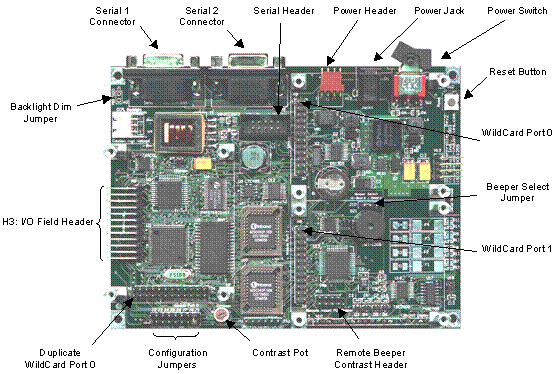Motorola 68hc11 Microcontrollers Serial Communication Interface

Next: LCD display for the Up: Serial Communication Previous: RS-232 Serial Protocol. Motorola 68HC11 SCI Interface. The Motorola 68HC11 supports one SCI. We'll discuss both transmitting and receiving ends of the SCI. Carti Pdf D. The programmer controls the operation of the SCI interface through a set of hardware registers that. Motorola 68HC11 Architecture. Serial Communication Interface. This subsystem allows the 68HC11 to communicate with asynchronous serial.
Figure 22: Parallel versus Serial Interfaces The Motorola 68HC11 supports both parallel and serial communication. The MicroStamp11 uses the parallel ports PORTB and PORTC as interfaces to external memory chips.
So the MicroStamp11 programmer does not have access to these parallel ports. The MicroStamp11 programmer has access to two types of serial communication subsystems through PORTD. These are the asynchronous serial (SCI) and the synchronous serial (SPI) communication interfaces. This learning module presents basic methods associated with using the SCI and SPI serial communication subsystems in the MicroStamp11. The learning module shows you how to build a system that measures the voltage over a potentiometer and displays this voltage on a liquid crystal display (LCD). Besanko 2nd Edition Microeconomics Graphs there.
The potentiometer's voltage will be measured using an 8-bit analog-to-digital converter IC (ADC0831). The ADC0831 does an 8-bit analog-to-digital conversion and then transmits the converted measurement over a synchronous serial interface (SPI) to the micro-controller. The micro-controller then displays the converted measurement on a 2 line by 16 character LCD module (BPI-216). Communication between the MicroStamp11 and the BPI-216 is accomplished through an asynchronous serial interface (SCI).
• • • • • • • • • Next: Up: Previous: Bill Goodwine 2002-09-29.
The EPROM+ programming system supports the entire Motorola 68HC11 family of microcontrollers. Baixaki Campeonato Brasileiro 2004 De Ps1 Emulator. Several variations are shown in the photo. Support is provided with an Asynchronous Communication Adapter;.
The ASYNC adapter is a complete serial communications subsystem which snaps into the socket on the EPROM+ programming unit. Using the ASYNC adapter, the EPROM+ system connects to the 68HC11 processor via it's Serial Communications Interface (SCI) pins. Once connected, communication is established and a special control program is uploaded into the internal RAM of the processor.
With the control program in place, communications is established with the EPROM+ system which provides the user with complete access to specific memory areas (EPROM, EEPROM) or the entire 64K address range of the part ( including I/O). ABOUT THE ASYNC ADAPTER The Asynchronous Communication Adapter (#ACOM1 or #ACOM2) is a complete serial communicaton subsystem. In addition to providing full duplex communication, it also provides an 8 MHZ clock source for the processor plus control of the reset line to insure a proper start-up sequence. The TRANSMIT, RECEIVE, CLOCK and RESET pins are buffered for additional drive plus Vpp is provided for programming the internal processor eprom if available.
The adapter also provides 5 volts and ground which may power the processor or force the MODE pins to logic 0. Direct connection to a board mounted processor may be accomplished with the optional. GENERAL USE The sequence for connecting and communicating with the 68HC11 processor is extremely easy. First the required pins are attached to the processor (stand-alone or in-circuit). The processor is reset in boot strap mode. This may be accomplished as a normal power-up sequence or automatically if attached to the ASYNC adapter RESET pin.
The special control program is uploaded from the EPROM+ to the 68HC11 using the DEVICE OPTIONS command. Once the program is uploaded, the system indicates that communication has been established. At this point all EPROM+ functions are available to read or program the 68HC11. The EPROM+ system allows access to any memory area within the 68HC11 processor. This includes EEPROM, EEPROM and RAM. Note that not all members of the 68HC11 family contain all memory technologies.
EXAMPLE: The 68HC811E2 contains 2K of EEPROM, 256 bytes of RAM and no EPROM. To make referencing the desired memory area easier, the EPROM+ software automatically maps the beginning of the selected block to 0. The illustration shows the EEPROM area of a 68HC711E9 which has been selected and mapped to 0. Note that the EEPROM area, which normally exists between B600 and B7FF in the 68HC711E9 memory map, now appears as a single block existing between 0 and 1FF (512 bytes) in the system buffer. The selected memory always appears as a single block beginning at 0 and ending at the last address of the memory area.